
Sex, Madness, and Spirituality
The Introverted Intuitive and Individuating with the Inferior Function
Download or listen to this article
Suzanne Cremen, December 16, 2020
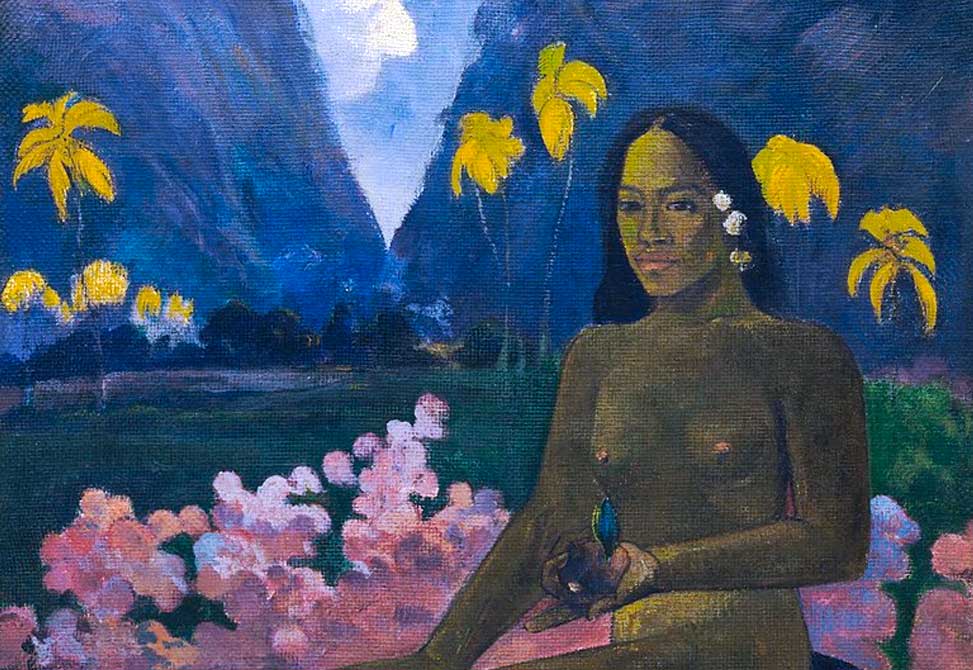
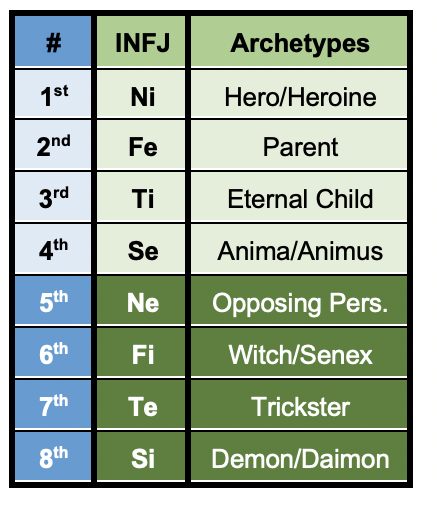
Many type scholars have endeavored to describe the nature of the Ni function. According to Haas and Hunziker, introverted intuition is the only perception process that is independent of the conscious mind, working in mysterious ways and on its own timetable (2011, p. 64). Operating through flashes of insight, it seeks to understand the entire “dance of the universe,” through an abstract sense of the essential nature of all things and their complex interrelationships (p. 64). Jungian analyst Edward Whitmont observed, “People of the introverted intuitive type experience and realize life in terms of the unconscious; to them the world of the archetypes is a concrete reality. They perceive ideas, images and inner possibilities; they are attuned to the psychic atmosphere” (1991, p. 152). John Beebe has drawn on depictions of personality type in film, such as Charlie Chaplin in City Lights (1931), to show how the individual with an Ni preference cannot help but perceive meaning and symbolism through the concrete world of the senses. “They live so close to the archetypal they are themselves almost archetypal” (Beebe, personal communication, 2012). It is clear that the dominant Ni function of such individuals is intrinsically linked to the unconscious. What, then, of their fourth or inferior function?
The Inferior Function Fool
In psychological type theory, it is an individual’s fourth or inferior function which makes the bridge to the unconscious, also offering a pathway to spiritual experience. From midlife onwards, recognizing and relating to the inferior function is essential for individuation, for becoming who we are. Marie-Louise von Franz described the inferior function as the divine fool, the “fool” hero. It is the despised, ridiculous, unadapted part of the personality, but also that which “builds up the connection with the unconscious and therefore holds the secret key to the unconscious totality of the person” (von Franz, 1971/1986, p. 10). In his wonderfully titled article “The Strange Case of the Inferior Function,” Angelo Spoto described the operation of the inferior function in each person’s psychological type “as both the lure and the trigger that ultimately throws an individual into a new experience of consciousness” (1995, p. 78). Spoto also flagged the inferior function as a moral issue and a “trouble-maker” which “stops us in our tracks” (2011, ¶1). John Beebe observed that, despite the inferior function being a perpetual source of shame for most people, “with its connection to soul or spirit, it is also a place of great idealism in the psyche” (2007b, p. 3). These comments about the inferior function could just as easily apply to common experiences of sexuality. Sexual desire, too, can be a source of shame or humiliation for many people, but it can also be a place of idealism and connection to something deeper—a soul-making force that radically engages and transforms the ego.
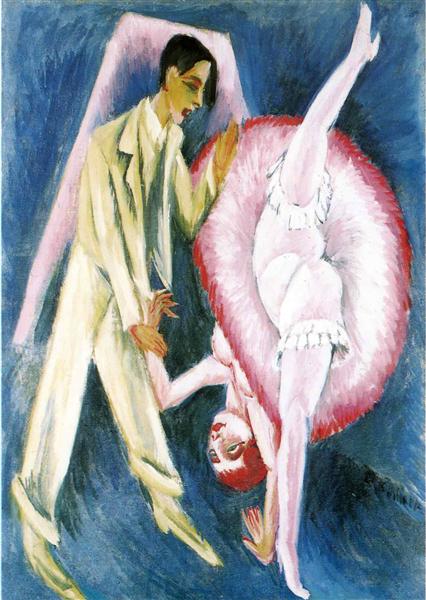
The Anima and Animus are like fairy bridges to the unconscious, allowing, almost magically, a relationship to develop between the two parts of the mind, conscious and unconscious, with the potential to replace this tension of opposites with the harmony of wholeness. And it is through the undifferentiated, incorrigible inferior function that they do their best work! (p. 40)
In other words, the inferior function, representing the doorway to the unconscious, is carried by the anima or animus, an archetypal dynamic which plays out in romantic and sexual relationships.
An Especially Odd Paradox
When the inferior function comes up against the individual’s superior function, this poses a paradox for every type. It is, however, an especially odd paradox for INFJ and INTJ individuals. Their dominant function of consciousness (Ni) is that most closely associated with the archetypal realm and the unconscious; on the other hand, their inferior function (Se), which connects them with the unconscious, is very much about being in the present and in the material world. Extraverted sensing is about how we “sense and relate in a concrete and practical way to outer objects” (von Franz, 1971/1986, p. 27). It “seeks the full sensory experience of the environment in the moment” and needs such raw, unsorted, unadulterated experiences in order to feel alive (Haas & Hunziker, 2011, p. 34). Typical examples given for individuating with inferior Se are activities such as communing with nature, gardening, cooking, or molding clay to make sculpture. INFJ Tarrin McDonald (2020) wrote evocatively about how learning to “touch the earth,” move her body, capture beauty with her camera and create physical objects with her hands were all experiences with her inferior Se function which became “a shrine by the wayside, an altar to the external world” (¶ 16). But what about sexual activity?
Does not sex, as a physical and sensory activity, fall in the realm of Se? Yet when in the position of the inferior function, because of its “contamination with the collective unconscious,” sexual attraction and activity come to possess more “archaic and mystical qualities” (Jung, 1940/1973, ¶184). For the Ni individual especially, Von Franz’s (1971/1986) comments about the inferior function could apply equally to sexuality:
It is amazing how deeply the inferior function can connect one to the realm of animal nature within oneself. … The inferior function is actually the connection between one’s deepest instincts, with one’s inner roots, and is, so to speak, that which connects us with the whole past of mankind. (p. 72)
However, for Ni types, when the inferior function becomes associated with extraverted sensation—the function connected with sensual experience, the body, and sexual activity—its emergence becomes the doorway to a maelstrom of not only personal but collective shadow energy.
The fact that the topic of sexuality is largely absent in the scholarly writing on psychological type further evidences its relegation to the collective shadow. Von Franz is one of the few who touch upon the topic of sexuality in passing, writing that “the introverted intuitive has particular trouble in approaching sex because it involves his inferior extraverted sensation” (1971/1986, p. 43). She alluded to the example of German philosopher Friedrich Nietzsche, who has been typed as a dominant Ni:
It is most tragically mirrored in Nietzsche, for instance, where, toward the end of his career, shortly before he went insane, very coarse sexual allusions penetrate his poems and also appear in Thus Spoke Zarathustra … . Inferior extraverted sensation in his case was very much connected with women and sex, in a completely concrete way, and he didn’t know how to deal with the problem at all. (von Franz, 1971/1986, pp. 43-44)
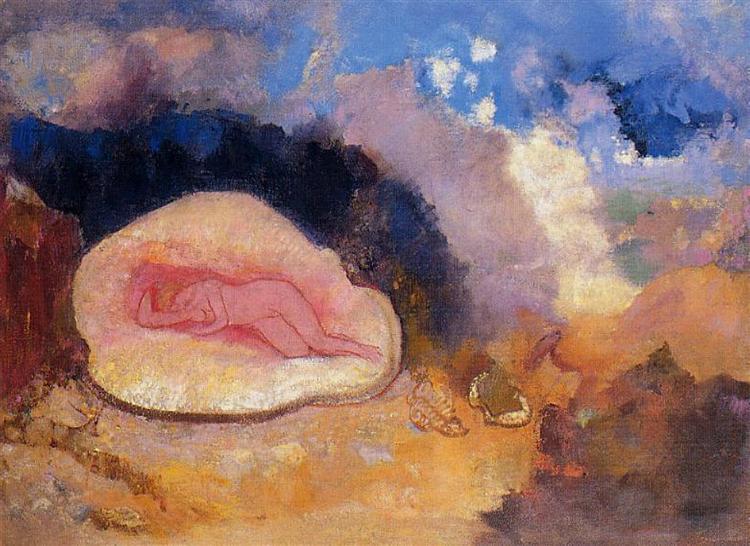
As an INFJ woman with dominant Ni, I confess to a personal interest in the exploration of this topic. Yet I have found little if anything written about introverted intuition in women and the inferior function, except perhaps when they suffer from the pathology of schizophrenia, which “often appears in intuitive types when they are marginally adapted to practical reality” (Sandner & Beebe, 1995, p. 324). The inferior function is “an area of special vulnerability to possession by the figures of the collective unconscious … enabling archetypal contents to flood an impoverished ego for good or for ill” (pp. 327-328). My first romantic and sexual encounter at age 17 was emotionally powerful and extremely disorientating (Cremen 2020, pp. 81-82). It was surrounded by synchronicities which held a numinous quality, indicating the activation of archetypal contents (Main, 1997, p. 18). Its abrupt, confusing ending propelled me in the direction of the local Anglican church for help with what I experienced as a spiritual crisis, though not for reasons of shame or morality as much as for the sense of aliveness, imagination, and sacredness that had been awakened. Unfortunately, the spiritual and psychological guidance I needed was not forthcoming. I quickly withdrew when I intuited that the church minister could not help me (a blessed intuition as it transpired, when twenty years later I discovered on the television news he had repeatedly sexually abused other young women in his parish). Yet the uprising of powerful libidinous archetypal content coupled with unhelpful reductive religious dogma and a difficult home and school environment—all of which constellated around the liminal threshold of adulthood—culminated in a brief psychotic episode shortly after my eighteenth birthday. Though the external fallout was minimal, the inner fallout of trauma and shame over my breakdown was to reverberate for years.

We see these kinds of sexual–spiritual excesses often occurring in adolescence because, as Jung observed, “in order to cushion the impact of the unconscious, an irrational type needs a stronger development of the rational auxiliary function present in consciousness” so that his or her consciousness is sufficiently protected against the inroads of the unconscious (Jung, 1921/1971, ¶ 670). Over the years and decades since my initial sexual encounter—which could be viewed as an early encounter between my dominant Ni and inferior Se functions—my auxiliary function of extraverted feeling (Fe) and tertiary function of introverted thinking (Ti) developed into sufficiently strong “arms” (Beebe, 2007a) to support and balance the other function-attitudes, whereas as a teenager, I had yet to integrate these functions in a supportive matrix. The image of a tight-rope walker using her arms for balance comes to mind, also suggesting that the task of using all our function-attitudes in concert is one that requires a degree of readiness and preparation. Jung observed that it was usually only in exceptional circumstances—such as the individuation process Jung sometimes witnessed in the analysis of a relatively mature person in the second half of life—when the archaic functions would press for integration into consciousness (Beebe, 2006, p. 39). Certainly at midlife, the mandate to recognize and relate to the inferior function—to become what we are—becomes pressing.
Sexuality as a Vehicle for Dionysiac Madness
Ni individuals who are psychologically tasked with integration of the inferior function through their sensory experiences of the body, and of sexuality, are engaged in what is not only critically important work at a personal level, but at a collective level, too. This can be regarded as work of deep integrity, even a moral imperative. Spoto argued that “For Jung, the inferior function is thus not just trouble-maker extraordinaire, it is a moral exigency as well” (1995, p. 97). Yet this concept of morality does not involve the shaping and judgment of one’s character or personality by an external authority or collective mores; rather, “the roots of morality are posited inside one’s own deepest nature as an individual morality itself extends out from the person to the world” (Spoto, p. 97).
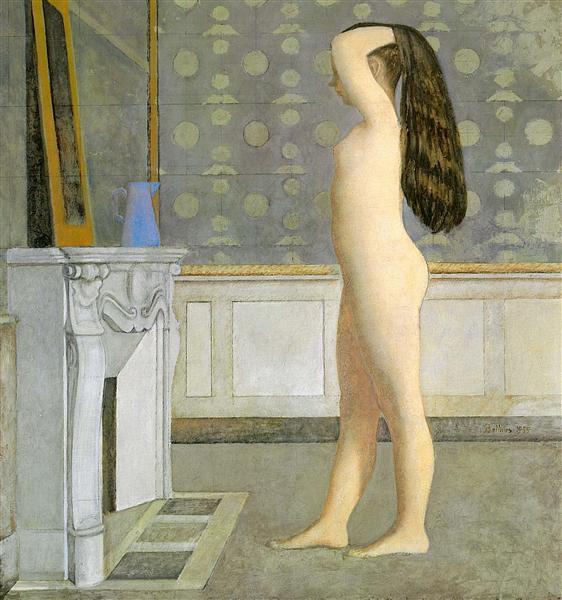
The parts of the personality associated with the inferior function and the shadow represent, to varying degrees, just those aspects of our individual and collective lives that the ego as well as all external laws and society seek to cage and tame. (Spoto, 1995, p. 98)
Nowhere are Spoto’s words about the inferior function truer than in respect to sexuality.
An illuminating window into this raw, instinctual side of human nature can be found in the mythology of Dionysus, the god of ecstasy and sensuous pleasure. Robert Johnson (2009) described how Dionysus was the original scapegoat who came to represent the worst evil in Christian and Jewish societies and has long been exiled in Western civilization. A complicated figure, Dionysus was the ancient Greek god of wine, madness, women, tragedy, and ecstasy. This ecstatic quality, the capriciousness of life that the Greeks enjoyed so much, was discredited and frequently misunderstood, especially as it was (and still is) often served up in forms of inflation or addiction, as with the degraded Roman god Bacchus. “Few people know that the word orgy, which evokes such an emotional response, originally meant ‘ritual workshop of the god Dionysus’” (p. 13). To worship Dionysus, Johnson reminded us, is to worship the life force. The repression of Dionysus meant repression of ecstasy and joy in the West, though many Eastern religions respect the body as a legitimate means of enlightenment and make a sacrament of the sensuous world as a path to the divine union.
From a psychological perspective, Von Franz confirmed that the ecstatic state is usually connected with an experience of the inferior function (1971/1986, p. 44). According to Johnson (2009), the advent of Dionysus, the psychological archetype of ecstasy, represents a new stage in human development. The Dionysian experience of spiritual ecstasy “was the last faculty to be added to our repertoire, and the one most often missing and least in our control” (p. 26). Yet “we carry the archetype of ecstasy deep within us, and it must be lived out with dignity and consciousness” (p. 47). Johnson described how this god/archetype may be invited in through the inferior function—what Jung described as the “God connection”—with conscious ego as welcoming host (p. 60).
As a mythological role model, Ariadne’s marriage to Dionysus offers inspiration to women. Betrayed and abandoned on Naxos by her first love Theseus, whom she had rescued from the labyrinth, Ariadne made a second, spiritual marriage to Dionysus. By all accounts it was a perfect union: he was always faithful to her, they never quarreled, and they had many children. Johnson suggested that many married women of pre-Christian times took Dionysus as a second husband (2009, p. 40). Exploring the myth of Dionysus and the exile of his Maenad priestesses, Rafael López-Pedraza (2000) described how a combination of Titanism and tyranny led to the repression of the Dionysiac way of life (p. 70). He also suggested that the communion of Aphrodite and Dionysus invites us to see sexuality as an “initiation into Dionysiac madness; in other words, to accept sexuality as an imaginative erotic vehicle for connecting to Dionysiac madness” (p. 72).
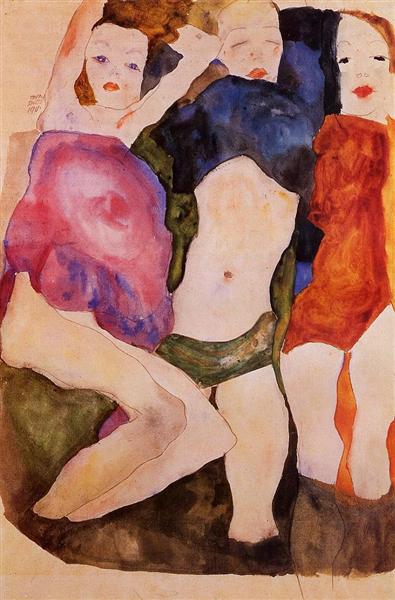
The woman who is virgin, one-in-herself, does what she does—not because of any desire to please, not to be liked, or to be approved, even by herself; not because of any desire to gain power over another, to catch his interest or love, but because what she does is true. … As a virgin she is not influenced by the considerations that make the nonvirgin woman, whether married or not, trim her sails and adapt herself to expediency. … She is what she is because that is what she is. (p. 125)
In an archetypal sense, the virgin is the woman who bears her divinity in her own right, and she may even be a woman with much sexual experience.
Healing the Split between Sexuality and Spirituality
The process of individuation, involving recognition and relation to the inferior function, may summon the Ni individual to the intrapsychic and interpsychic work of healing the larger dualistic division, furthered by Christianity and patriarchal traditions, between the spiritual and the sexual. This duality was also the divisive split between Jung and Freud and their understanding of the term libido. For Freud, libido was understood as sexual need or sexual desire. For Jung, libido had a much larger meaning, connoting a general life instinct or psychic energy, which extended beyond sexuality and certainly encompassed something of a spiritual nature (1928/69, ¶ 54-56). Jung also hypothesized that the difference between the types—in particular, whether extraversion or introversion predominated—stemmed from different localizations of the libido (Shamdasani, 2003, p. 62). David Tacey (2012) has described Jung’s theory of libido as bipolar. Whenever the sexual aspect of libido was explored, the spiritual aspect would come up as well:
If we search for the roots of sexuality, Jung believed, we have to be prepared to accept spirit as well, as these are the two faces of the same life-force. Sexuality he said is “the other face of God, the dark side of the God-image.” This sacred force demands to be known in its totality, and will not be content at being seen as a biological function. What is left out of the picture becomes a source of trouble and discontent. … The early analysts claimed to be champions of the repressed, and while they dredged up the sexual aspect of the libido—often against “civilized” opposition—they were unable to act as liberators of spiritual energy. “The assimilation of the fundamental insight that psychic life has two poles,” Jung writes, “still remains a task for the future.” (Tacey, 2012, pp. 13-14)
In the 2011 film A Dangerous Method, directed by David Cronenberg, Sabina Spielrein is the woman who initiates this assimilation, the emergence of the transcendent function, bridging Freud and Jung and their theories of libido. The fictionalized Spielrein suggests to Jung that, in contrast to Freud’s view of the sexual drive arising from a simple urge towards pleasure, sexuality involves losing oneself in the other and destroying one’s own individuality. She tells Jung, “I’m saying that perhaps true sexuality demands the destruction of the ego” (Cronenberg, 2011, scene 72). Grounded in an embodied phenomenology, Spielrein’s hypothesis suggests that sexuality’s humbling and relativization of the ego can trigger something akin to the ego’s encounter with the Self: an ecstatic, profoundly numinous or spiritual experience. Along these lines, after a discussion about libido and a case study of one of Jung’s female patients, Tacey (2012) wrote:
The paradox of the spiritual life is that when we make a connection to spirit, energies are allowed to enter the human realm with renewed vigour. The transpersonal connection does not sap energy from life, but allows vitality to flow into the fleshly, human world. In Jung’s psychology, spirit and sex are not opposed, but complementary. If we introduce the transpersonal dimension, our personal lives will improve and our sexual relationships will be more rewarding. (pp. 42-43)
In the microcosm of a personal life and the journey of individuation, Ni individuals are particularly susceptible to finding themselves tasked with facing and living this paradoxical relationship between spirituality and sexuality.
The dialogue between the superior and inferior functions, manifesting for the Ni individual in the humbling call to live into the mysterious and compelling relationship between the spiritual and the sexual, is vital for the development of consciousness at both the individual and collective levels. The hallmark of the Ni character is some intention to the religious level of things. An Ni individual cannot help but bring this intention toward assimilating the physicality and concreteness of the inferior extraverted sensing function, whether this be experienced though gardening, cooking, sculpture … or sex. Jung wrote that the inferior function “so spins us about that we are no longer masters of ourselves and can no longer rightly distinguish between ourselves and others” (1917/1976, ¶ 85). Perhaps nothing spins us about so much as sex. It entails the dissolution of boundaries physically and psychically, propelling us into a union with Otherness.
References
Beebe, J. (1992). Integrity in depth. Texas A & M University Press.
Beebe, J. (2006). Evolving the eight-function model. Australian Psychological Type Review, 8(1), 39-43.
Beebe, J. (2007a). The arms and their shadow. Typeface, 18(3), 22-27.
Beebe, J. (2007b). The spine and its shadow. Australian Psychological Type Review, 9(2), 11-20.
Bonheim, J. (1997). Aphrodite’s daughters: Women’s sexual stories and the journey of the soul. Fireside Books.
Cremen, S. (2020). From career to calling: A depth psychology guide to soul-making work in darkening times. Routledge.
Cronenberg, D. (Director). (2011). A dangerous method [Film]. Lago Film.
Haas, L., & Hunziker, M. (2011). Building blocks of personality type: A guide to using the eight-process model of personality type. TypeLabs.
Harding, M. E. (1971). Women’s mysteries: Ancient and modern. Shambhala.
Hillman, J. (1972). The myth of analysis: Three essays in archetypal psychology. Northwestern University Press.
Johnson, R. A. (2009). Ecstasy: Understanding the psychology of joy. Harper Collins e-books.
Jung, C. G. (1967). On the psychology of the unconscious (R. F. C. Hull. Trans.). In H. Read et al. (Eds.), The Collected Works of C. G. Jung (Vol. 7). Princeton University Press. (Original work published in 1917)
Jung, C. G. (1969). On psychic energy. (R. F. C. Hull. Trans.). In H. Read et al. (Eds.), The Collected Works of C. G. Jung (Vol. 8). Princeton University Press. (Original work published in 1928)
Jung, C. G. (1971). General description of the types (R. F. C. Hull. Trans.). In H. Read et al. (Eds.), The collected works of C. G. Jung (Vol. 6). Princeton University Press. (Original work published in 1921)
Jung, C. G. (1973). Psychology and religion (R. F. C. Hull. Trans.). In H. Read et al. (Eds.), The collected works of C. G. Jung (Vol. 11). Princeton University Press. (Original work published in 1940)
López-Pedraza, R. (2000). Dionysus in exile: On the repression of the body and emotion. Chiron Publications.
Main, R. (1997). Jung on synchronicity and the paranormal. Princeton University Press.
McDonald, T. (2020). Shrines by the wayside. Personality Type in Depth, (40). http://typeindepth.org/2020/03/infj-inferior-function-shrines-by-the-wayside/
Myers, I. B., McCaulley, M. H., Quenk, N. L., & Hammer, A. L. (2003). MBTI manual: A guide to the development and use of the Myers-Briggs Type Indicator (3rd ed.). Australian Council for Educational Research.
Sandner, D., & Beebe, J. (1995). Psychopathology and analysis. In M. Stein (Ed.), Jungian analysis (2nd ed., pp. 322-330). Open Court.
Shamdasani, S. (2003). Jung and the making of modern psychology: the dream of a science. Cambridge University Press.
Spoto, A. (1995). The strange case of the inferior function. In Jung’s typology in perspective (pp. 75-107). Chiron Publications.
Spoto, A. (2011). The inferior function— a moral issue. Personality Type in Depth. http://typeindepth.org/2011/10/the-inferior-function-as-a-moral-issue-2/
Tacey, D. (Ed.) (2012). The Jung reader. Routledge.
von Franz, M.-L. (1986). The inferior function. In M.-L. von Franz, & J. Hillman (Eds.), Lectures on Jung’s typology (pp. 1-72). Spring Publications. (Original work published 1971)
Whitmont, E. C. (1991). The symbolic quest: Basic concepts of analytical psychology (revised ed.). Princeton University Press.
Yakushko, O. (2020, June 20). Historical huntings and modern oppressions: The legacies of Malleus Maleficarum in western psychologies [Online conference presentation]. Magic from the Margins: Witches, Women and Emerging Ecologies of Psyche, Pacifica Graduate Institute, CA.
Images
Balthus (1955). Figure in front of a mantel. Retrieved from wikiart.org
Gauguin, P. (1892). The seed of the areoi. Retrieved from wikiart.org
Kirschner, E. (1914). Dancing couple. Retrieved from wikiart.org
Redon, O. (1912). The birth of Venus. Retrieved from wikiart.org
Sage, K. (1956). Le passage. Retrieved from wikiart.org
Schiele, E. (1911). Three girls. Retrieved from wikiart.org
Stella, J. (n.d.). Apotheosis of the rose. Retrieved from wikiart.org



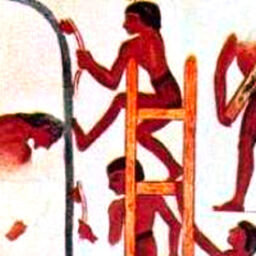
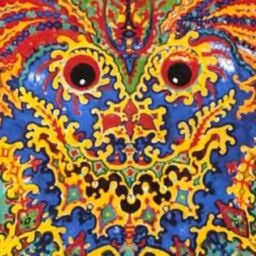
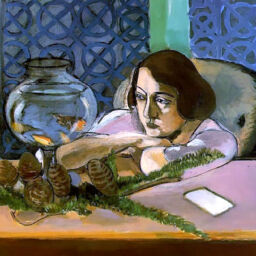
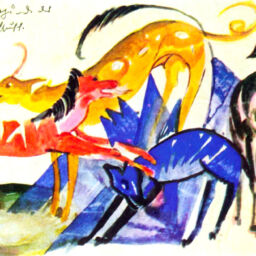
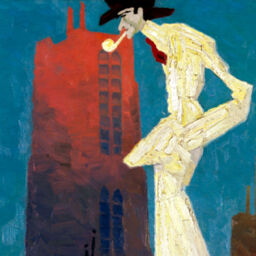
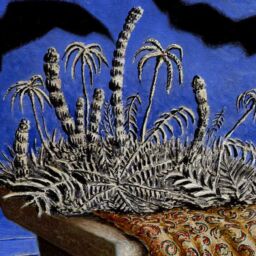
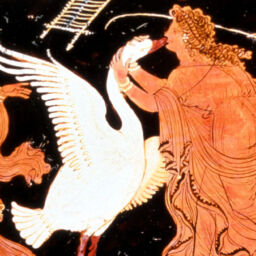
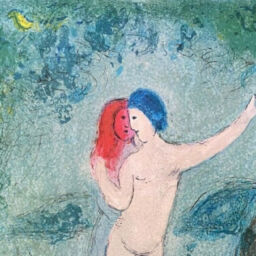
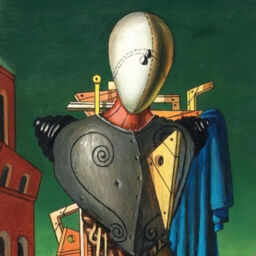
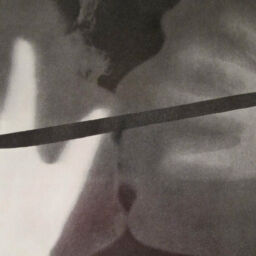
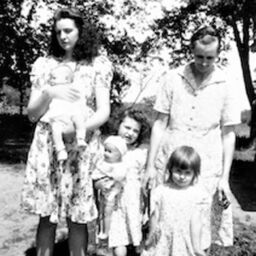
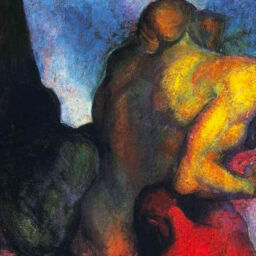
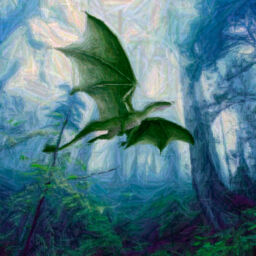
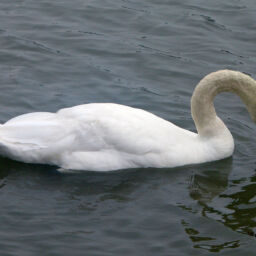

Thank you, Suzanne, for the article, it brightened my outlook as I spend these summer days with my parents, putting my inferior extroverted sensing (bodily resonance awareness) to work to see through the distorting psychotic layers of our family trauma. I wanted to mention it as another area of the Anima-Animus syzygy/inferior Se application. I think it has a direct relation to the Rainmaker process of perceiving beta-elements of the collective family field, processing it through my body while using the introverted intuition for spotting the archetypal dynamics and the auxiliary thinking function to parse out how it applies concretely to our family dynamics.
Going through psychotic layers and differentiating their distortions is not easy but it’s rewarding when I see the shifts in my family members, especially the youngsters. I can see how it contributes to my own individuation/separation while also benefiting my larger family.
Articolo straordinario!
Hello Suzanne, I really enjoyed reading this. I would have to say that I am still a beginner learning Jungian analysis. Also I am male, and unsure, if this article is really meant for me, even though I, too, tested as an INFJ when I did the online test a few months back. I am looking forward to learning more about the huge topic that is Jungian psychoanalysis
Thank you Doris, I appreciate your response to this piece. Suzanne
Congratulations, Suzanne, on this wonderful, illuminating, and inspiring piece! Moving from the collective trauma after the witch hunts to the image of a ‘virgin’ as a woman onto herself, independent of Western repression, is so empowering. Thank you very much for sharing.